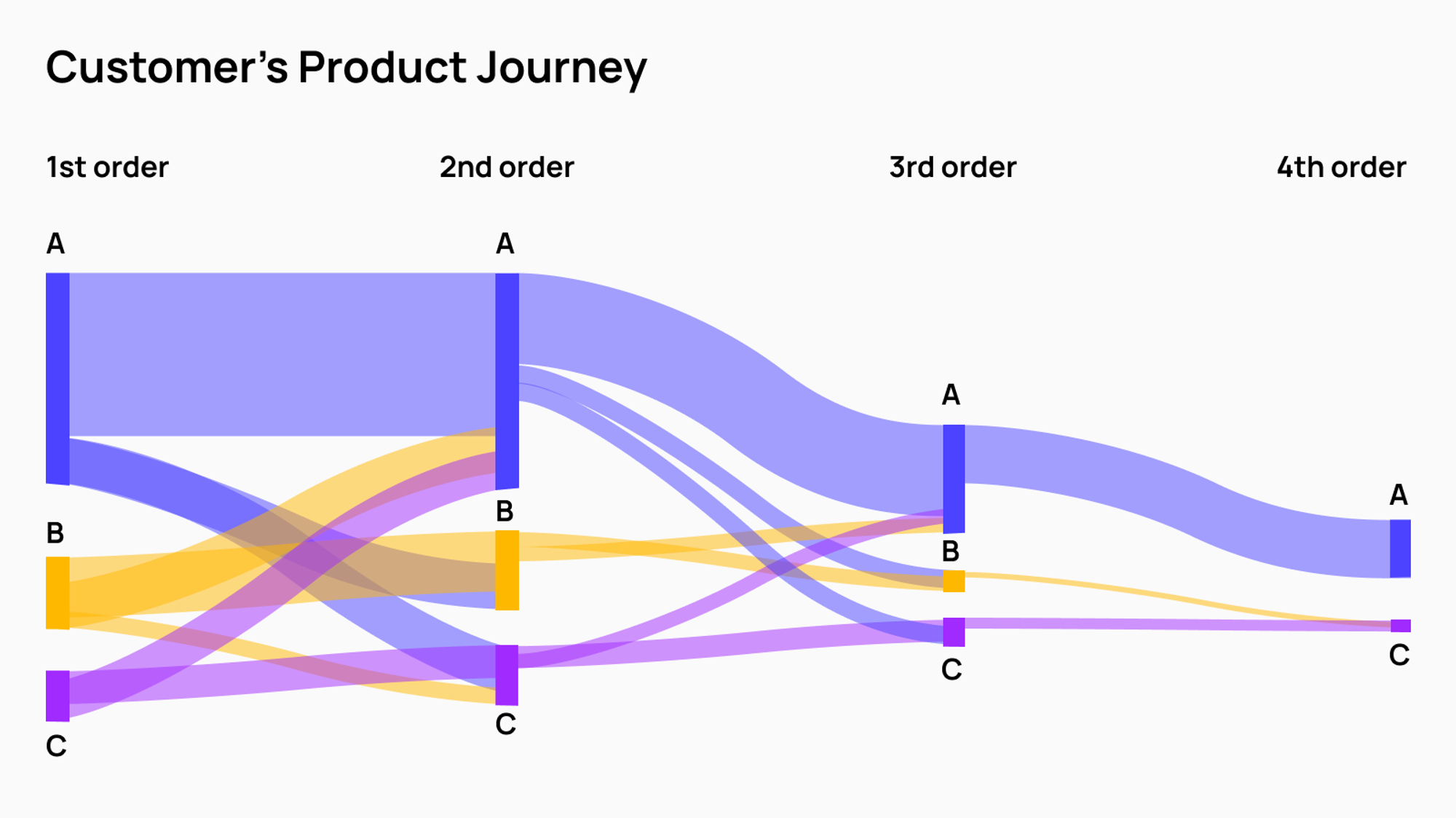Build Customer Loyalty Through Item Journey
What would our customers who bought product A would buy next? What products draw loyal customers and what do they buy afterward? This is why we need to analyze the item journey.
Dec 19, 2022
Item journey shows what products customers purchase while using our service. What would our customers who bought product A would buy next? What products draw loyal customers and what do they buy afterward? This is why we need to analyze the item journey. Checking up on one’s attendance and studying hours is the same as analyzing retention rate and LTV. In the same context, we also need to check on the materials one studies through looking at the item journey. Only after we check on item journeys along with LTV and Cohort, we can complete customer retention analysis.

Originally, the item journey feature was not on our dashboard. We developed the feature as we thought item journeys can solve what our clients really want. Here’s some examples to see how item journeys can lead to certain actions.
The point at which the item journey breaks - Which consultants make customers leave?
There used to be our client who provided an online divination consultant matching service. As the service highly depends on the consultant getting matched, we thought some consultants will retain clients while some don’t. Therefore, we started with seeking consultants who churn customers. Focusing on the consultation cycle, we considered customers who passed a certain number of days since the last consultation as churn customers and tracked on their last consultant. Of course, it was natural to find a lot of churn from popular consultants who did a lot of counseling. However, consultants with a high churn rate compared to the total number of counseling cases were found. It was the right point at which the item journey breaks.
Once we find consultants with a high churn rate, we could find the specific reasons why clients left them through the reviews they left. Out of this information, we could make use of it by giving tips to existing consultants for securing regular clients or by using it as an important criteria while recruiting new consultants. This process of finding and improving the cause of churn is very important as decreasing the churn rate is the only way to increase Carrying Capacity before adding new features or products!
The point at which the item journey starts - Which products are bought after the purchase of advertised products?
As it is easier to draw customers with the main product when the brand reputation is low, many e-commerce SMEs use their main product page as their landing page. However, many customers who are drawn with the products instead of the brand itself easily churn. On the other hand, some of them remain as loyal customers and make a second purchase with the other product. This is the part where customer experience expands from mere product to brand. At this point, we have to find out what kind of products have loyal customers bought as they are the main key of a long-lasting brand. This gives us a clue on what kind of experience helps remaining customers.
Among Retentics’s clients, we have a client who sells Health Functional Food. This client used to run ads only with the specific product that has the highest advertising efficiency. Their main goal was to find what remaining customers buy next after they click and buy the advertised product. With the hypothesis that knowing the remaining customer’s item journey can decrease churn customers who were mainly driven by advertisement, we checked on remaining customers’ first purchase to their fourth purchase. We found out that the majority of the customers bought the same product for the second purchase as their first, but different products from the third purchase onwards. Knowing customers who bought the advertised product would likely buy next, we could bring some customers back by sending messages to customers who left after their first purchase.
Conclusion
Likewise, item journey helps examine the inside of customers’ retention indicator like a microscope. We can find out the reason for the high churn rate and what product is likely to lead to another purchase. Retentics’s item journey also tells you how long it takes on average to buy the next item. You can not only track the sequential purchase after a certain item but also track what items were bought before that item.Use Retentics and find out the customer retention journey in more detail and prevent churn by designing optimal product journeys!
Written by: Julian Kim
Share article